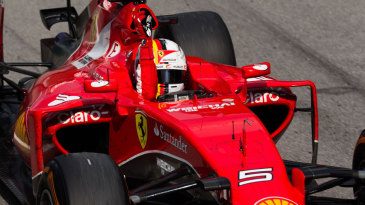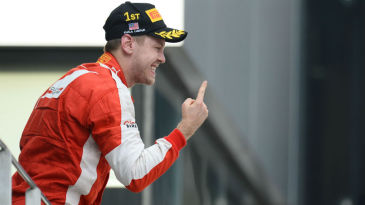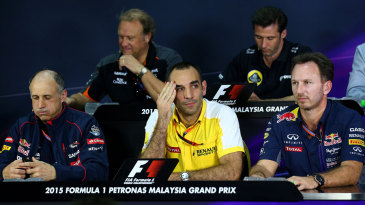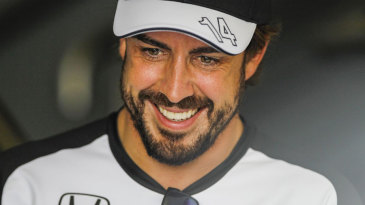
| Year | Engine | Driver | Race | Start | Won | Pod | Class | Best | 1+2 | Pole | Front | Best | Lap | Pts | Pos | ||||
|---|---|---|---|---|---|---|---|---|---|---|---|---|---|---|---|---|---|---|---|
| 1957 | Porsche | E Barth, JCPAJH Godin de Beaufort, U Maglioli | 1 | 3 | 0 | 0 | 2 | 12 | 0 | 0 | 0 | 12 | 0 | 0 | - | ||||
| 1958 | Porsche | E Barth, JCPAJH Godin de Beaufort | 2 | 3 | 0 | 0 | 2 | 6 | 0 | 0 | 0 | 13 | 0 | 0 | - | ||||
| 1959 | Porsche | JM Behra, HC Blanchard, MT de Filippis, JCPAJH Godin de Beaufort, W von Trips | 3 | 3 | 0 | 0 | 2 | 7 | 0 | 0 | 0 | 12 | 0 | 0 | - | ||||
| 1960 | Porsche | E Barth, H Herrmann | 1 | 2 | 0 | 0 | 2 | 6 | 0 | 0 | 0 | 10 | 0 | 1 | 7 | ||||
| 1961 | Porsche | J Bonnier, JCPAJH Godin de Beaufort, D Gurney, H Herrmann | 8 | 25 | 0 | 3 | 22 | 2 | 0 | 0 | 2 | 3 | 0 | 23 | 3 | ||||
| 1962 | Porsche | J Bonnier, JCPAJH Godin de Beaufort, D Gurney, P Hill, B Pon, N Vaccarella, H Walter | 9 | 25 | 1 | 2 | 19 | 1 | 0 | 1 | 1 | 1 | 0 | 19 | 5 | ||||
| 1963 | Porsche | JCPAJH Godin de Beaufort, GK Mitter | 7 | 9 | 0 | 0 | 7 | 4 | 0 | 0 | 0 | 15 | 0 | 5 | 7 | ||||
| 1964 | Porsche | JCPAJH Godin de Beaufort | 1 | 1 | 0 | 0 | 0 | - | 0 | 0 | 0 | 17 | 0 | 0 | - | ||||
| Total | 32 | 71 | 1 | 5 | 56 | 1 | 0 | 1 | 3 | 1 | 0 |
| Race | Circuit | Date | ||
|---|---|---|---|---|
| First race | German Grand Prix | Nürburgring | August 4, 1957 | Race results |
| Last race | German Grand Prix | Nürburgring | August 2, 1964 | Race results |
If you ask anyone to think of Porsche, even a dyed-in-the-wool fanatic thinks of sports car racing and the German marque's outstanding successes over the past five decades. What most Formula One fans forget, though, is that Porsche won in Formula One once, too.
Porsche's first involvement with racing came after the Second World War when the company was asked to design a grand prix car for Piero Dusio and Piero Taruffi. This was called the Cistalia Type 360 and was way ahead of its time with its 1.5-litre flat-12 engine mounted behind the driver, independent suspension and four-wheel drive. Sadly, the car proved too complex and was all but stillborn in 1948. Luckily, Porsche also penned a simpler car for Cistalia, the Giacosa, and this sold in sufficient numbers for a one-make series.
Porsche's 356 sports car was the company's bread and butter and it was not long before the car appeared on the track, starting with the Le Mans 24 Hours in 1951. Success soon followed, spawning a line of cars that are still winning races at the start of the 21st century.
A modified Porsche Spyder RSK was entered in Formula Two in 1957 by Edgar Barth, winning first time out at the Nurburgring. Suitably encouraged, Jean Behra had one converted to "central seat" specification and won a Formula Two race at Reims. This spurred Porsche to build a proper single-seater and it was given its debut at Monaco in 1959 by Wolfgang von Trips. Further forays followed with Barth and Hans Herrmann driving in 1960, while Stirling Moss helped Porsche win the Formula Two title. It had become clear, however, that a proper Formula One car would be needed.
The planned eight-cylinder car was not ready for the start of the 1961 season, so Jo Bonnier and Dan Gurney struggled with the four-cylinder 787 model and this was, like everything else, left in the wake of the "shark-nose" Ferraris. Despite this, Gurney was pipped by just 0.1s in the French Grand Prix by Giancarlo Baghetti's Ferrari. He also finished second in the Italian and United States Grands Prix to end the year equal third with Moss, with Porsche ranking third in the Constructors' Cup.
Porsche's eight-cylinder engine made its debut in the first round of 1962 and Gurney ran third until retiring. However, the Porsche 804 was an improvement and he scored his first (and Porsche's only) win in the French Grand Prix at Rouen. He and Bonnier then finished first and second in the non-championship Solitude Grand Prix before Gurney added a third place in the German Grand Prix to finish fifth overall, with Porsche also fifth in the Constructors' Cup. Feeling that to achieve more would cost too much, Porsche quit Formula One.
Considering sports cars more pertinent to its road car business, Porsche set about winning the Le Mans 24 Hours, which it did for the first time in 1970 when Herrmann shared the winning 917K with Richard Attwood and Porsche has done so more than a dozen times since, being the leading marque in GT racing through to today.
Porsche became involved with Formula One again in the 1980s when one of its engines was badged as a TAG turbo in deference to the corporation that funded it and fitted it in the back of the McLarens. It hit the tracks late in 1983, but it was in 1984 that it made its impact as Niki Lauda and Alain Prost ended the year first and second overall, having scored 12 wins between them.
Prost then won the 1985 and 1986 titles, with the McLaren-TAG combo taking the 1985 constructors' honours. This relationship lasted through 1987, when the Honda used by Williams proved stronger and McLaren dropped Porsche.
Porsche returned in 1991, with Footwork campaigning a Porsche V12. Unfortunately, it was overweight and the team failed to score a point before dropping it to run a Ford engine.
Reproduced from The Ultimate Encyclopedia of Formula One published by Carlton Books
- Porsche ruled out F1 due to lack of road car relevance (April 23, 2013)
- The pole-less champions (March 2, 2012)
- The pole-less champions (March 2, 2012)
- One record Schumacher doesn't hold ... (September 30, 2011)
- Porsche to consider F1 foray (October 1, 2010)




